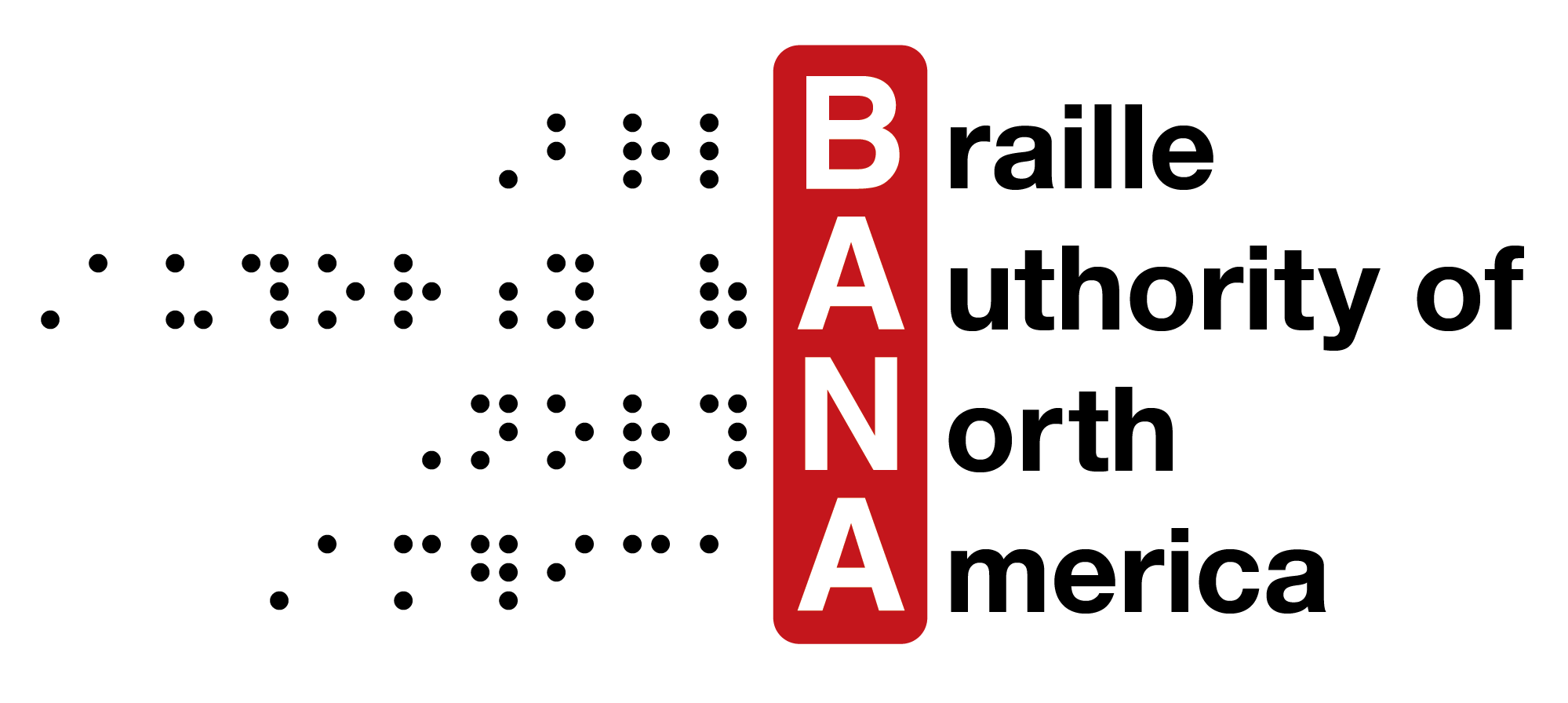
Terminology: UEB Math/Science and UEB with Nemeth
A Position Statement by the Braille Authority of North America
Adopted September 2020
Introduction
In November 2012, the United States members of the Braille Authority of North America (BANA) voted to adopt Unified English Braille (UEB), with implementation of the code to be underway by January 2016. The Nemeth Code for Mathematics & Science Notation was maintained as an official code for use in the United States. This means that technical content (i.e., any mathematical expression or chemical formula) can be transcribed in UEB or in Nemeth. As of January 2016, the official codes for use in the United States are UEB, the Nemeth Code, the Braille Music Code, and the International Phonetic Alphabet (IPA).
Unified English Braille
UEB is a complete code that can be used to read and write both literary and technical content in braille. This is a major change from the previous code used in the United States, English Braille American Edition (EBAE), which could only be used for literary materials.
Nemeth Code
Nemeth is a specialized code for writing and reading mathematics and science in braille. It was originally structured with the surrounding nontechnical text written in English Braille American Edition (EBAE). The implementation of UEB required a shift in how surrounding nontechnical text is written with Nemeth because EBAE is no longer one of the official codes. BANA developed guidelines for use of the Nemeth Code embedded within UEB text. Code switching indicators are employed to prevent any ambiguity or conflict between UEB and Nemeth symbols. This allows the text surrounding the math expression or chemical formula to be in UEB while the technical content itself is transcribed in the Nemeth Code. In other words, Nemeth Code is used within UEB contexts.
Current Status
In November 2015, BANA issued the following statement:
The Braille Authority of North America (BANA) recognizes and appreciates the genuine concerns from the braille community regarding the transition to Unified English Braille (UEB). BANA stands by our original motion to adopt UEB as a complete code as well as the implementation statement issued in 2014 in which we expressed that the Nemeth Code remains integral to braille in the United States. The Board of BANA could not reach consensus regarding the establishment of a single standard code for technical materials for braille in the United States. The decision to use UEB or the Nemeth Code within UEB context for technical materials should be made based on braille readers' individual needs. [emphasis added]
With the U.S. having two codes for mathematics and science transcriptions, a number of misunderstandings have arisen about the way the two codes work and what they are called. These misunderstandings have led to some students receiving textbooks, tests, and instructional materials in a code they have not learned. The term "Nemeth Code within UEB contexts," although technically precise, has caused confusion. Simply calling Nemeth materials "Nemeth" does not provide adequate distinction between modern Nemeth transcriptions with UEB for surrounding text and those transcribed in EBAE contexts, some of which are still in existence. References to "Math UEB" or "UEB math code" may reinforce the misconception that there are two UEB codes. More consistent and unambiguous terminology is needed to clearly refer to each code so that materials can be produced and ordered accurately.
It should be noted that the phrase "technical material," used in the title of the UEB guidelines for producing such material, is also intended to apply to computer notation. For computer notation, UEB symbols are used regardless of whether or not the Nemeth Code is used for math and science. Therefore, even though "technical materials" is used in the title of the guidance, it is recommended that when distinguishing between the two codes for math and science in the United States, other terminology be used. Preceding both terms with "UEB" can provide consistency and also identify UEB as the structural code in which Nemeth is embedded. With all these considerations in mind, BANA makes the following recommendations.
Recommendations
-
For the sake of clarity and consistency, technical materials should be referred to as "UEB Math/Science" or as "UEB with Nemeth."
-
All new transcriptions of math and science materials should be produced in one of these two codes—UEB Math/Science or UEB with Nemeth. Examples include textbooks, standardized tests, and supplementary materials.
-
Care should be taken by entities ordering materials for students to ensure that educational materials, especially standardized tests, are procured in the correct code by referring to them by these consistent terms.
